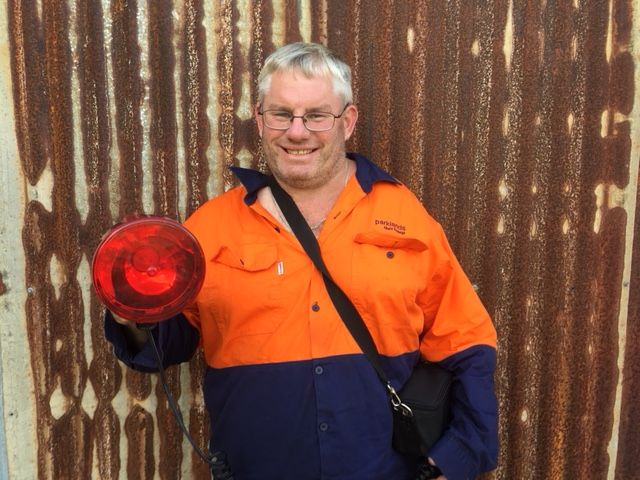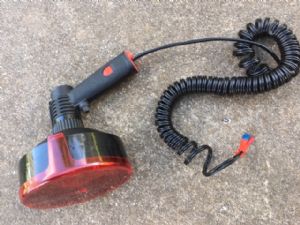We are disappointed that COVID-19 has forced the cancellation of our planned ranger led Spotlighting Night Walks during the school holidays.
But that doesn’t mean you can’t do it yourself! Here’s how to go about it…
A daytime reconnoitre to choose a good site and get your bearings is always a good idea. Choose a park with plenty of native vegetation – alongside a creek or river is usually a rich area for wildlife. A good walking track will make night walking easier.
Get yourself a good strong spotlight style torch. Our old one looks like this and requires a heavy battery pack, but modern ones are much lighter. These days even LED head lights are strong enough to use for this purpose. You might also like to carry a small torch/mobile phone light to use for navigating the path etc.
Unless your spotlight already comes with a red filter, head to a newsagent or office supplies shop for a sheet of red cellophane. Tape this across the front of your torch. This is important for the wellbeing of the animals you are looking at – they are set up for night vision, not glaring white lights!
Head out on dusk to see creatures like sugar gliders and squirrel gliders emerging from tree hollows and gliding off to their feeding sites, or later to spot them feeding. You may spot different creatures on your way out to those you see coming back a bit later.
Keep your noise down and walk quietly and slowly for best results. Take your time; look low for possums on the ground and feeding in shrubs, look up trunks and along limbs, look high in the branches and foliage.
Move your torch slowly and steadily, holding it up at eye level so you are looking directly along the light beam. You are looking for eye shine; once you see that you can centre the beam on the eyes and get a good view of the creature.
Once you have something in the light, hold the beam steady with the creature in the centre to show other people where to look. You’ll notice that different species have different coloured eye shine and spacing between the eyes.
Try to keep disturbance to a minimum and just quietly observe creatures going about their business. Never try to touch or force them to move.
Our night walks usually yield active possums (ringtail and brushtail) and snoozing white cockatoos at the very least. We often spot owls, tawny frogmouths, frogs, microbats and fruit bats, and if we are really lucky, squirrel gliders. Enjoy a few of our night walk photos below.
We’d love to hear about your DIY Night Walk. Post your adventure to our Facebook page here https://www.facebook.com/ParklandsAlburyWodonga











